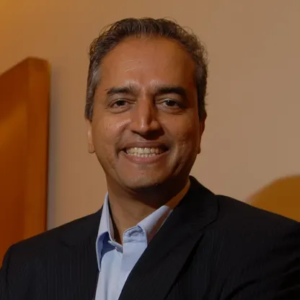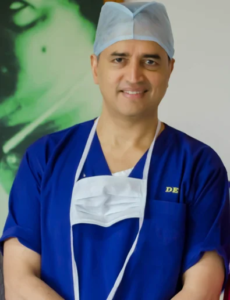Dr. Devi Shetty: Founder of Narayana Health – Vision & Impact
The Saint in Blue Scrubs: How Devi Shetty Became India’s Heartbeat

By Priya Sharma, Health Correspondent, the monsoon rain drums against the windows of Narayana Health City in Bangalore. Inside Operating Theatre 3, a 7-year-old girl named Leela sleeps under anesthesia, her chest open to reveal a heart no larger than a plum. Dr. Devi Shetty gloved hands move with rhythmic precision as he repairs a congenital defect that would have killed her before adulthood.
“When babies are born like this,” he murmurs to his team, “it’s not a tragedy. The tragedy is when we have the skill to save them but lack the system.”
Thirty minutes later, as Leela’s repaired heart takes its first independent beats, Dr. Shetty is already striding toward the next surgery. By sundown, he and his team will have performed 34 heart operations – more than some hospitals manage in a month. Each costs less than a mid-range smartphone.
| Aspect | Summary |
|---|---|
| Who | Dr. Devi Shetty, Indian heart surgeon and healthcare reformer |
| What | Performed thousands of affordable heart surgeries, revolutionized care |
| How | High-volume, low-cost model; innovative microinsurance; system efficiencies |
| Why | To make quality healthcare accessible to the poor and underserved |
| Impact | Saved countless lives, created future healers, global recognition |
Devi Shetty Who Heard Hearts
Young Devi Prasad Shetty knew two things growing up in 1960s Kinnigoli:
1) He was the 8th of 9 children in a family running a modest village eatery
2) His mother believed children should fight their own battles
“Appa once broke my toy cart,” Shetty recalls with a chuckle. “When I cried to Amma, she handed me a stick. ‘Go settle it,’ she said. I got thrashed, but I learned to stand my ground.”
That resilience ignited one Tuesday morning in 1967. His 5th-grade teacher held up a newspaper: “South African Doctor Performs Miracle Heart Swap!”
“I didn’t know what ‘transplant’ meant,” Shetty confesses. “But when Sister explained Dr. Barnard gave a dying man another person’s heart? I felt lightning in my chest.”
That night, 9-year-old Devi announced at dinner: “I’ll be a heart surgeon.” His fisherman uncle nearly choked on his fish curry.
Devi Shetty Apprentice

Medical school nearly broke him. “Physics and math were nightmares!” he admits. What saved him was an art teacher who noticed his trembling hands during exams.
“He made me sketch anatomy for 3 hours daily. ‘Your hands will learn what your mind fears,’ he promised. He was right.”
Years later, as a trainee at London’s Guy’s Hospital, Shetty faced his defining moment. A wealthy Indian industrialist needed emergency bypass surgery.
“The family begged me to assist. When I entered the OR, the lead surgeon snapped: ‘Nurses don’t belong here!’ I stood frozen in my brown skin.”
He persisted, eventually becoming the first Indian to lead cardiac rotations at Guy’s. But London’s gleaming hospitals haunted him. “Every night I’d dream of farmers back home selling land just to afford stents.”
Mother Teresa’s Prescription
1996. Kolkata. A frail 86-year-old nun grips Shetty’s wrist after her angioplasty. “Doctor,” Mother Teresa whispers, “why do you waste hands like yours on rich men?”
The question struck like a scalpel. Weeks later, he invited her to observe a surgery no Indian hospital would attempt: operating on a 9-hour-old infant with a heart defect.
As Shetty worked under the microscope, Mother Teresa watched silently. After 7 hours, the baby’s cyanotic skin flushed pink.
“You know what she told me?” Shetty’s eyes glisten recalling it. “‘God sees broken hearts He cannot fix Himself. So He sends people like you as His stitching hands.’”
That’s when Narayana Health was born.
The Revolution: How Hearts Got Affordable
1. The Volume Secret
“Western surgeons do 1-2 heart surgeries daily,” Shetty explains. “We do 35. When you operate that much, you get frighteningly good.”
- Dedicated teams for each surgery phase
- Standardized equipment setups
- 98% success rates matching global benchmarks
2. The “1,000 Small Cuts” Philosophy
Walking through Narayana’s wards, you notice radical frugality:
- Natural cross-breezes instead of AC ($200k/year saved)
- Reusable stainless steel trays
- Local-made generic drugs (90% cheaper)
“We negotiate like street vendors!” laughs COO Dr. Raghuvanshi. “Dr. Shetty once made GE lower MRI costs by proving their service contract profits were obscene.”
3. Devi Shetty : The Robin Hood Model
Private rooms with marble bathrooms subsidize free beds for farmers like Gopal Singh.
“They told me my boy’s surgery would cost ₹5 lakh ($6,000),” says Singh. “Here? We paid ₹47 ($0.60) for his birth certificate.”
Human Moments: The Soul of the Machine
Beyond statistics, Narayana thrives on radical humanity:
The Family Care Program
“Who knows a patient best? Their family,” insists Shetty.
- Monitor vital signs
- Change dressings
- Spot infection signs
Result: 40% shorter recovery times
The Microinsurance Miracle
Shetty’s Yeshasvini scheme covers 4 million farmers for just ₹5/month($0.06) for coverage. Funded partly by state coffers, partly by Narayana’s profits.
“Before Yeshasvini, we saw 3 diabetic amputations weekly,” says nurse Lakshmi. “Now? Maybe one a month.”
The Ripple Effect
When American journalist Lisa Stark visited Narayana, she expected “assembly-line medicine.” What she found shattered prejudices:
“In the pediatric ICU, I saw a surgeon singing Telugu lullabies… This wasn’t a hospital. It was a village healing itself.”
- The Economist: “The Henry Ford of Heart Surgery”
- Netflix: “The Surgeon’s Cut”
- Harvard Business School: template for post-capitalist enterprise
Most moving moment: 1,200 patients forming a human heart on his 60th birthday.But Shetty’s proudest moment? When 1,200 former patients formed a human heart shape outside the hospital on his 60th birthday.
Epilogue: The Unfinished Heart
At 72, Shetty still operates 4 days a week. His new goal? $800 heart surgeries using 3D-printed valves.
“We’ll get there,” he insists, showing prototypes of 3D-printed valves costing ₹1,200 ($15). “Because Luxury hospitals are cathedrals of despair. Real healthcare looks like this—”
- Rickshaw drivers napping outside recovery wards
- Schoolchildren donating to the Free Heart box
- A grandmother praying at the hospital shrine
“India taught me this truth,” he says softly.”Healing isn’t a transaction. It’s a love story written by countless ordinary hands.”
Some call him a saint. Others a genius entrepreneur.To Leela – now a 19-year-old nursing student – he’s simply “the uncle who let me hear my own heartbeat.”
And in that unassuming phrase lies the seismic truth of Devi Shetty’s revolution:
When you democratize hope, you don’t just save lives. You create future healers.